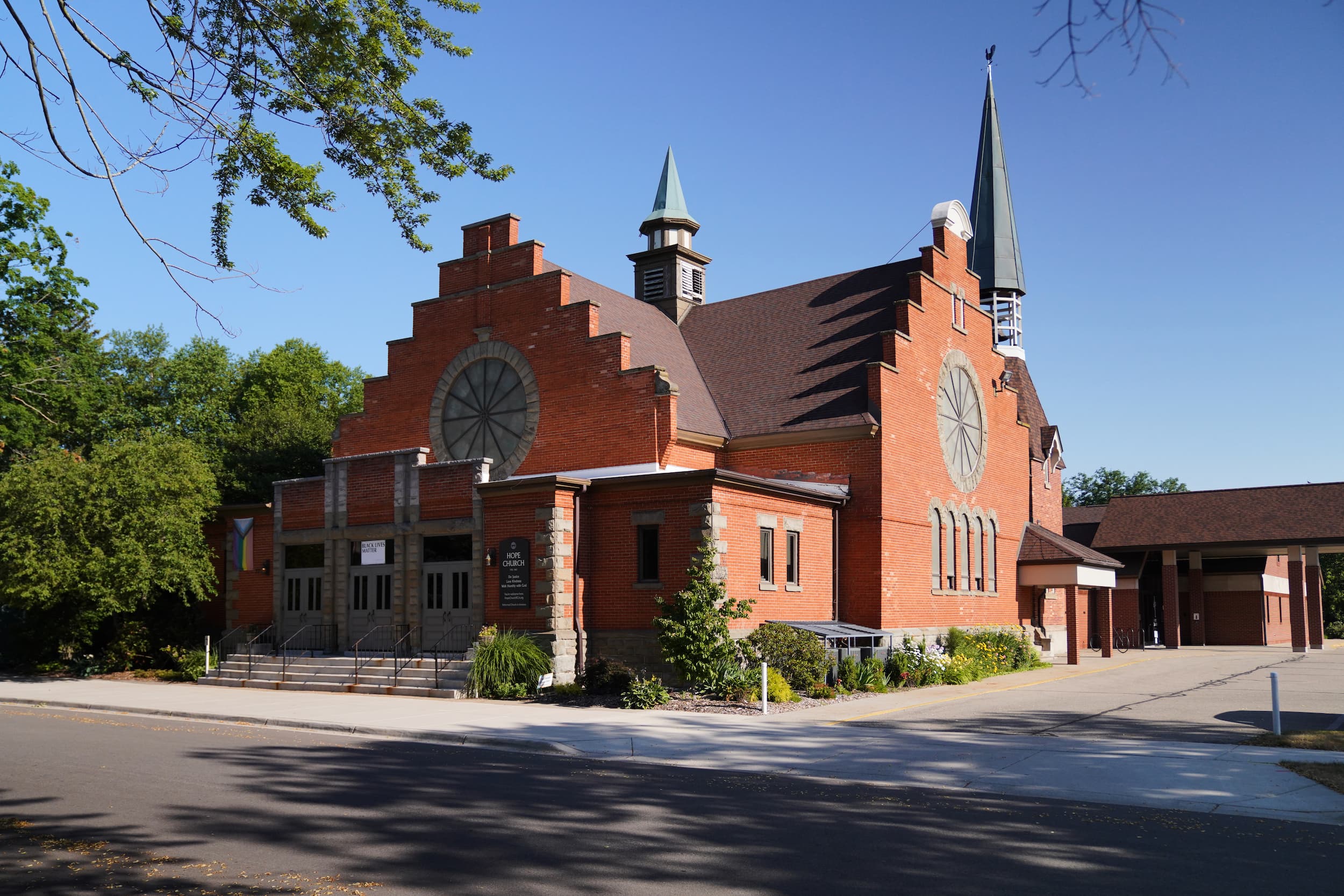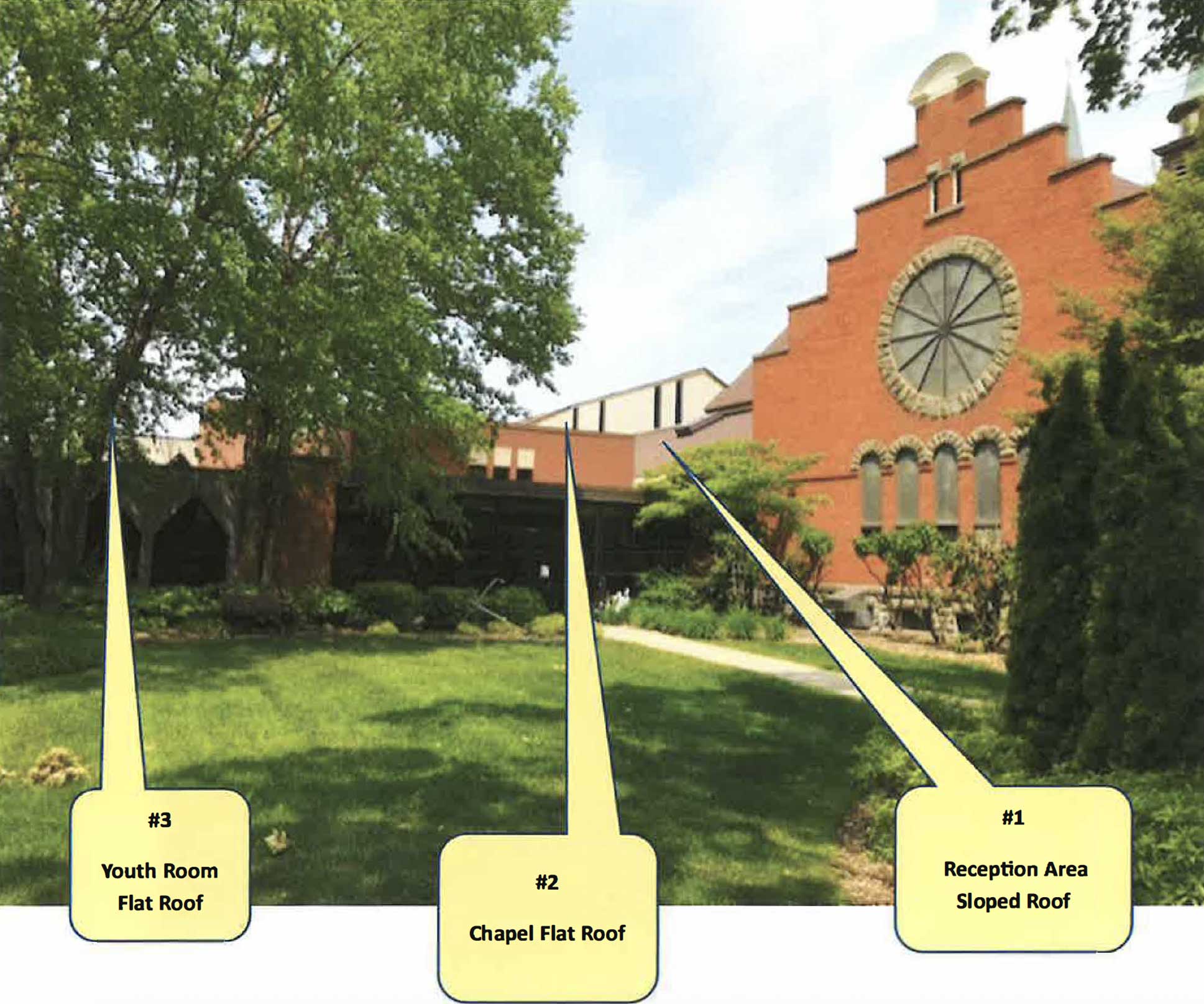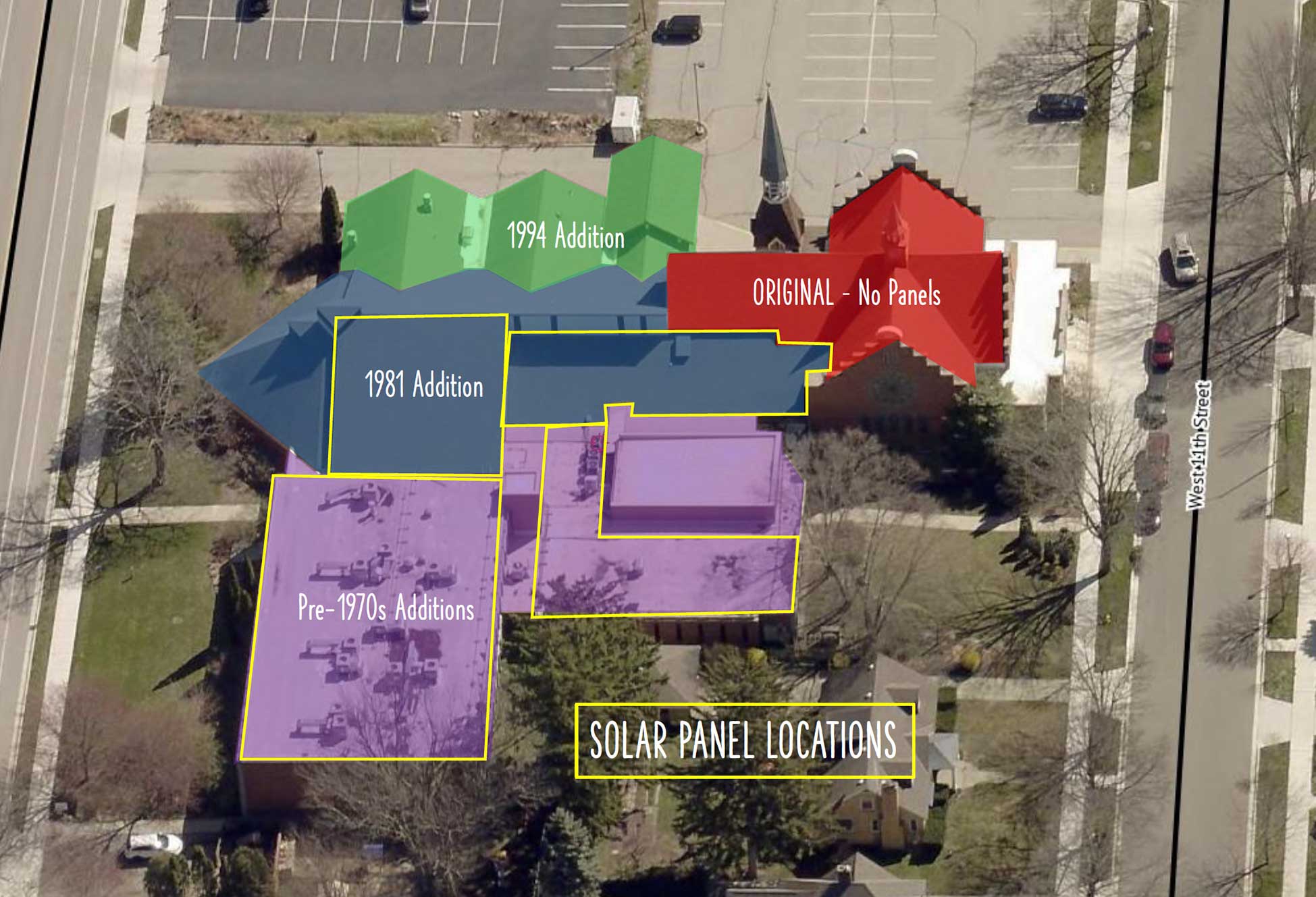

Hope Church on 77 West 11th Street in Holland, filed an application with the Holland Historic District Commission for a Certificate of Appropriateness. The congregation of the over 150-year old church would like to install solar panels on the building's roofs. The application was a necessary step since the church is registered by the state as a historical site.
According to the Commission’s agenda packet, Hope Church, formerly called Hope Dutch Reformed Church, was originally built in 1864. After a fire, the church was rebuilt in 1874. And then in 1902, the church was again rebuilt—this time to make it larger. The early structure is described in the packet as Rural Gothic architecture:
“Its steeply-pitched roof accents a spired bell tower which is octagonal. The buttressed walls are made of slate shingles. Some have geometric patterns of different colors. The newer section facing 11th Street is made of brick and is dominated by stepped gables and a round, stained-glass window. The platform porch and steps rise to three sets of wooden double doors.”
In 1989 the church received a letter from the Michigan Historical Commission announcing that the church had been registered as a historical site.
The letter includes additional architectural description and the history of the church, which reads in part:
Architectural description
“Hope Church is an end-gabled, Flemish-style church building of orange-red Veneklassen brick, and trimmed in rock-faced grey limestone. Stepped gabled parapets appear on the east, west and south elevations of the church. The tripartite entrance transom is trimmed in rock-faced limestone and surmounted by a recessed, round arch, limestone-trimmed oculus. Side facades are accented with quoining, and a sturdy slate roof tops the building.
History
The Hope Dutch Reformed Church has historical significance as Holland's first English-speaking church for the Dutch colony. It has architectural note as a Flemish-inspired church design linking the Dutch ancestry of the congregation and the city. Hope Church was organized on July 20, 1862, with 10 charter members. Two men especially fostered it: Dr. Albertus C. Van Raalte, founder of Holland and Hope College; and Dr. Philip Phelps, Jr., principal of the Holland Academy, and later president of Hope College.”
With the notable heritage and visual aesthetic of Hope Church considered, the Holland Historic District Commission proceeded to discuss the proposal for the installation of solar panels at the July 1, 2025, meeting.

The church’s proposal outlined the following plan:
• A 102kW solar array will be placed on five different roof planes on the church property.
• No panels will be installed on the original portion of the church, only the additions which were built in later years.
• More than half of the panels will be located on flat roofs and angled to the sun, with the highest point 14” above the roofline. For comparison, existing HVAC units are greater than 14” tall.
• The panels that will be located on sloped roofs will be installed flush, approximately 3” above the shingles, to match the existing roof angle. The panels will be black and are expected to generate 62% of the church’s annual electricity demand.
Peter Boogart from Hope Church acknowledged that getting approval from the Commission was “a critical piece of the puzzle.” The other hurdle will be cost. He estimated the solar project will require at least $250,000.
Anna Minnebo, Municipal and Preservation Planner, detailed to the Commission two properties that were previously approved for solar panels. “And just to note.” Minnebo said, “this is our first [approval for a] commercial/religious institution. So, pretty cool.” She explained that the appropriateness guidelines are for the panels to not be on an original roof and for the visibility of the panels to be minimal. Both criteria are met in the church’s proposal.
Minnebo showed an illustration that demonstrated how the panels would be on the rooftops of the later building additions. The only area that the panels would be visible from the street would be installed over the 1981 addition. “It’s not that we don’t want people to see these [panels],” Minnebo said. “It’s about being kind of conscious of not disrupting the [roof] lines,… keeping [the panels] flush is the way to do that.”

One board member said that having a single area of visibility was a way for the people coming to church to see that “little badge of honor.” The people will know that the church has solar panels, but they will be put in on in such a way that they’re not seen except in the one location.
The Commission voted unanimously to approve the application for a Certificate of Appropriateness as submitted and per testimony for solar panels at 77 W. 11th Street based on the local guidelines and the Secretary of Interior’s Standard #10 which states:
“New additions and adjacent or related new construction shall be undertaken in such a manner that if removed in the future, the essential form and integrity of the historic property and its environment would be unimpaired.”
With the Certificate of Appropriateness granted, once the financing is secured, the Rural Gothic architecture of Hope Church's historic original building may soon be flanked by 102kW of rectangular modernization.

Krista Yetzke is a native of Ottawa County. A jeep-driving, guitar-playing wife, mom, and everyday adventurer, Krista was raised on the love of Jesus, the great outdoors, the arts, the value of frugality, and the beauty of food as medicine.